Blogs
Who are India’s National Treasures?
Krittika Kumari
A closer look at India’s navratnas, or the nine gems, who brought about the first wave of modernism in the country.
“Europe belongs to Picasso, Matisse, Braque and many others, India belongs only to me.”
– Amrita Sher-Gil
Such was the intensity with which Amrita Sher-Gil depicted her surroundings in her paintings – rural India of the late 1930s – which she believed were fundamentally Indian in character. It was this unique and intensely personal representation of India that awarded the young artist the title of a National Treasure Artist of the country, along with eight other stalwarts of the art scene at the time – Raja Ravi Varma, the Tagores (Rabindranath, Gaganendranath and Abanindranath), Nicholas Roerich, Jamini Roy, and Sailoz Mookherjea. These are our Navratnas, the Nine Gems of Indian art.
If you haven’t heard of the term before, National Art Treasures of India refers to the works by these nine Indian artists, which can never be exported out of the country due to their artistic significance and value. In 1972, the Government of India passed ‘The Antiquities and Art Treasures Act’, which bans the movement of antiquities and certain artworks to outside the country.
As a part of the Act, the Government also decided to honour nine of India’s most well known artists as ‘National Treasure Artists’. While the intention was to celebrate these artists, the legislation ended up decreasing their international exposure and recognition, and subsequently the value of their art. This is the reason why, even today, works by these artists tend to command much lower prices in auctions than that of MF Husain’s or Tyeb Mehta’s.
Here’s a closer look at India’s navratnas who brought about the first wave of modernism in the country:
1. Abanindranath Tagore (1871-1951) – Pioneer of Swadeshi in Indian Art
Abanindranath Tagore was the nephew of the famous poet and artist, Rabindranath Tagore. He moved away from the colonial aesthetic that was predominantly taught in art schools in the country at the time and pioneered his own pan-Indian style of painting that came to be known as the Bengal School of Art. Combining elements of Mughal and Rajput paintings, Ajanta murals and the Japanese wash technique, his art is in many ways a celebration of India’s cultural past.
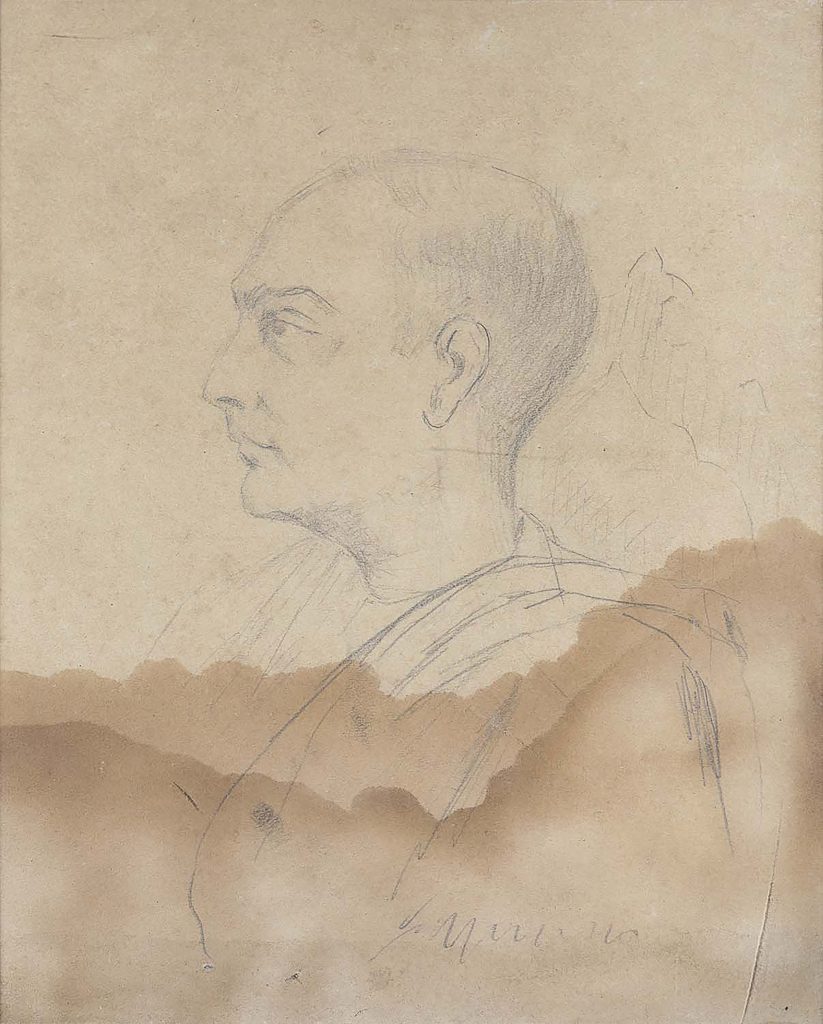
Self-Portrait by Abanindranath Tagore, Graphite on paper, MAC.01429
2. Amrita Sher-Gil (1914-1941) – India’s Frida Kahlo
Born to an Indian father, the notable photographer Umrao Singh Sher-Gil and a Hungarian mother, Amrita Sher-Gil took to art when she was just nine years old. Although she trained at the Ecole des Beaux Arts in Paris and mastered Western academic realism, it is only when Sher-Gil returned to India in 1934 that she developed a voice and aesthetic that was truly unique to her. She too was inspired by Rajput and Basohli miniature painting traditions, and the murals at Ajanta, which she combined with her knowledge of the figurative to create works that were inherently Indian in essence. Although she died at a young age, Sher-Gil’s legacy remains as India’s first significant woman artist.
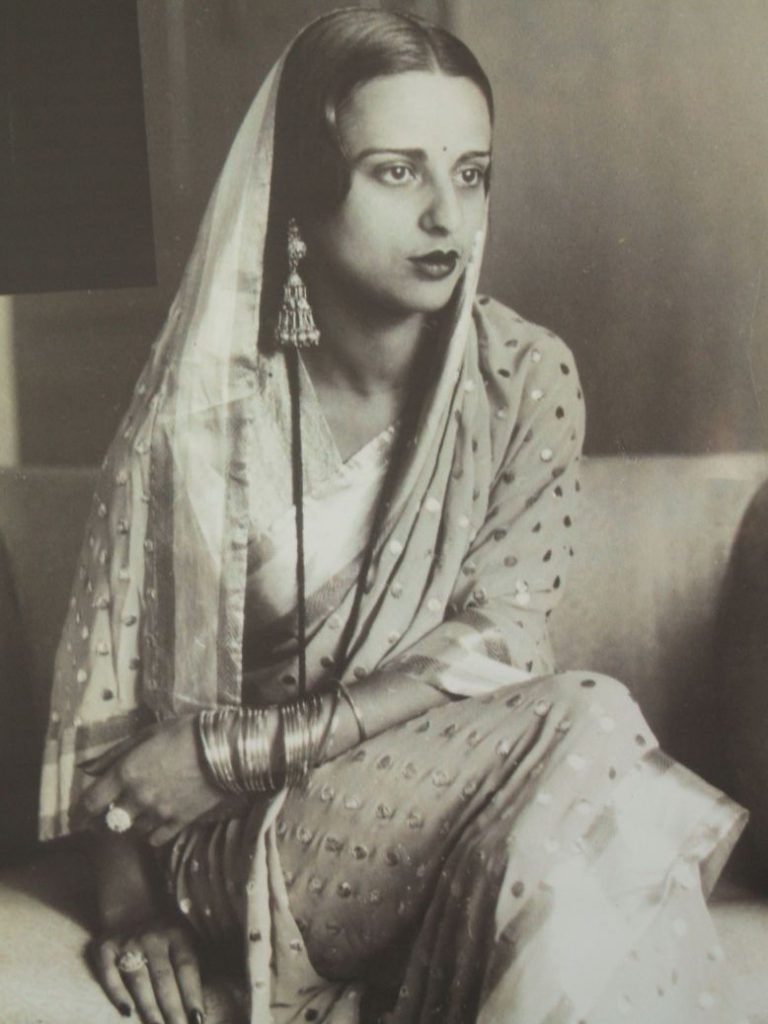
Photograph of Amrita Singh Sher-Gil, c. 1936, Image Courtesy: Wikimedia Commons
3. Gaganendranath Tagore (1867-1938) – The Satirical Genius
The older brother of Abanindranath, Gaganendranath Tagore made his own mark in India’s artistic milieu as a cartoonist and watercolourist. A self-taught artist, he initially dabbled in Western art movements such as Cubism and Expressionism. However, he later turned towards caricature as a form of expression, which brought out his extraordinary talent as an artist. His cartoons and sketches offer a satirical representation of the Bengali upper class society and culture in the 20th century.
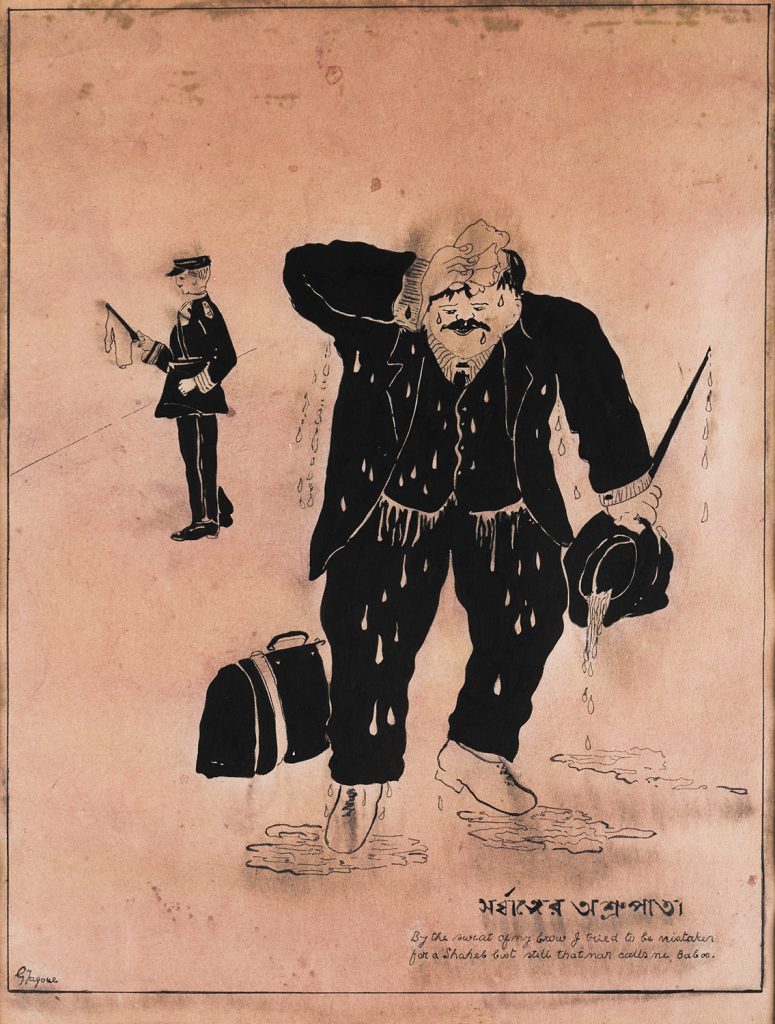
By the Sweat of My Brow by Gaganendranath Tagore, Lithograph on paper, MAC.01239
4. Jamini Roy (1887-1972) – The Modern Patua
Having studied at the Government School of Art in Calcutta from 1903-1908, Jamini Roy began his career with painting post-impressionist landscapes and portraits. However, he is more widely known for his instantly recognisable, folk-inspired iconography – simplified figures in fluid lines and with elongated eyes against a flat-coloured background. The change in Roy’s visual language came about when he moved back to his village in the early 1920s, where he derived inspiration from Bengal’s indigenous art forms, such as the terracotta sculptures at Bishnupur and patuas at Kalighat. In doing so, Roy developed an aesthetic that was rooted in his heritage of native, rural Bengal.
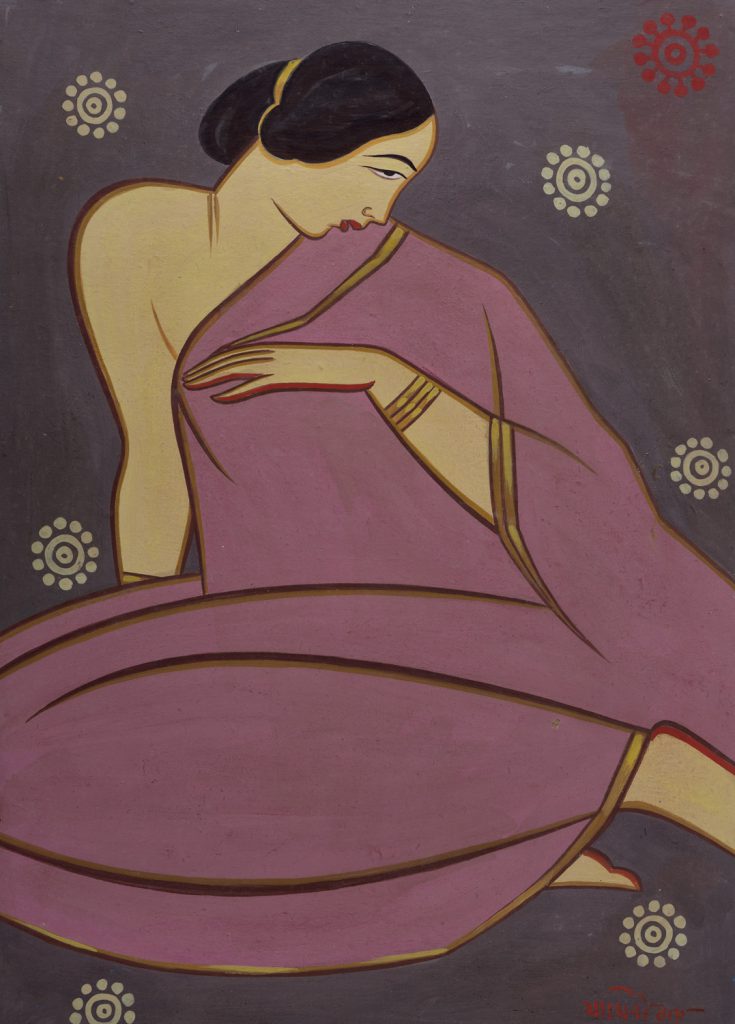
Lady in Pink Sari by Jamini Roy, c. 1920s, Tempera on board, MAC.00473
5. Nandalal Bose (1882-1986) – An Iconic Artist
Nandalal Bose was one of Abanindranath Tagore’s pupils and stalwarts of the Bengal School of Art movement. He too adopted the Japanese wash technique, which he used to depict his surroundings – the dreamy landscapes of Santiniketan and daily lives of the people. He created some of India’s most iconic images, such as of Mahatma Gandhi during the Independence movement, the Congress session in Gujarat and even created illustrations for the Constitution of India.
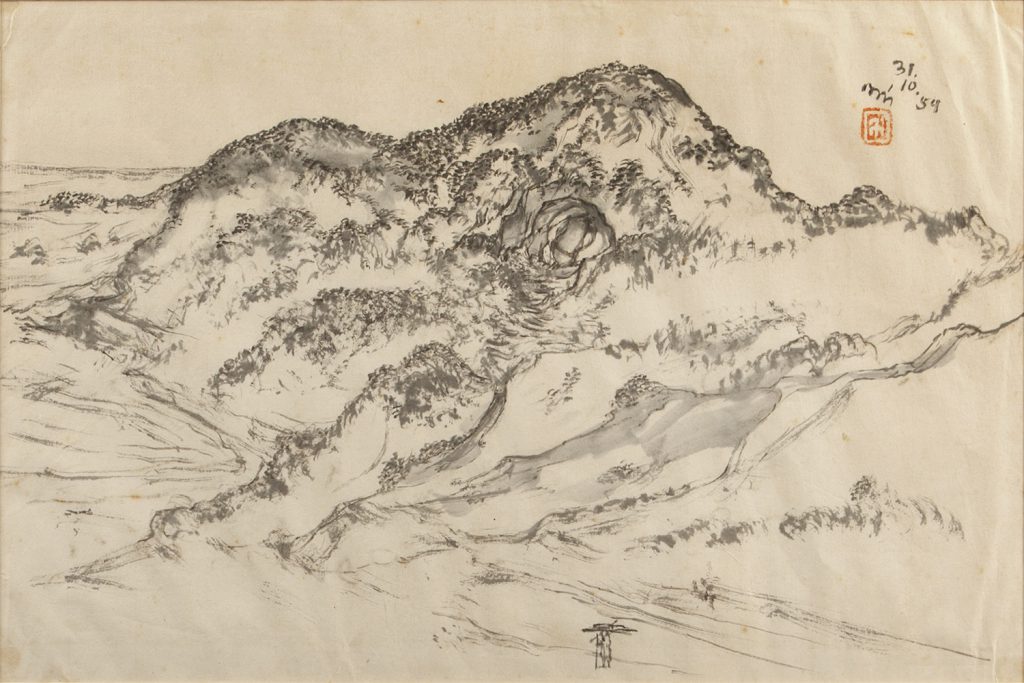
Landscape by Nandalal Bose, 1959, Watercolour on paper, MAC.01194
6. Nicholas Roerich (1874-1947) – An Indian in Spirit
One may think it strange for an artist of Russian-origin to be recognised as one of India’s National Treasure Artists. However, a glance at Nicholas Roerich’s snow-capped mountains reveals the artist’s profound connection with the country. Roerich, who moved to Himachal Pradesh in India in the 1950s and lived there until his death, managed to capture the essence of the Indian landscape through his depictions of the Himalayas, which were unmatched at the time.
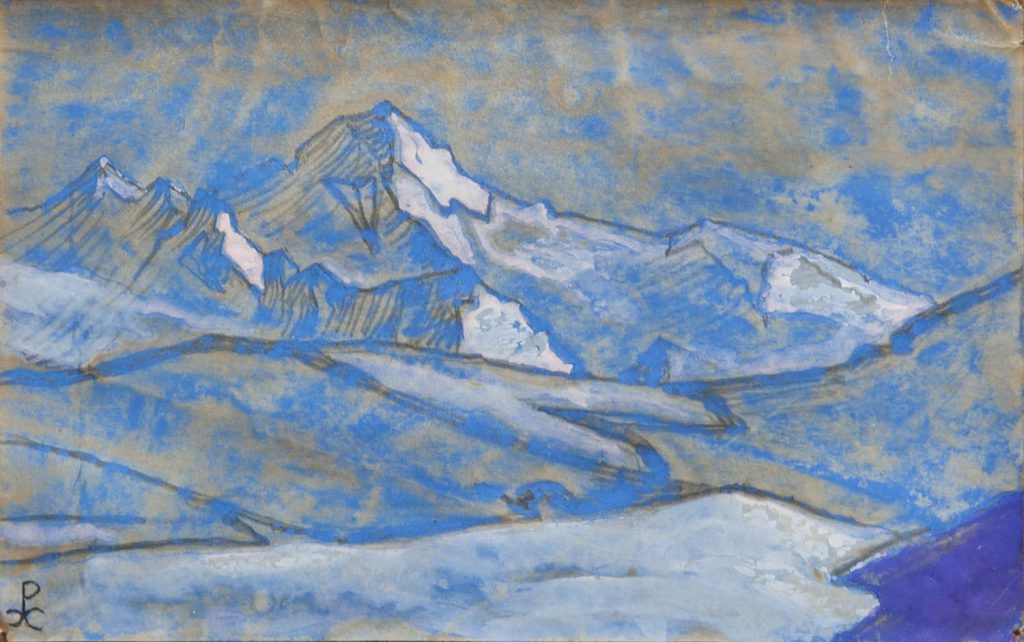
Ladakh by Nicholas Roerich, 1942, Gouache on paper, MAC.01086
7. Rabindranath Tagore (1861-1941) – The Prolific Poet
As India’s most prominent poet, author and Nobel laureate, Rabindranath Tagore perhaps needs no introduction. Apart from his elegant writings, Tagore’s art also contributed significantly to the onset of modernism in India. He turned to art late in his life, but created some of the most compelling artworks of the period. Tagore was also responsible for the setting up of the university at Santiniketan, and its art department Kala Bhavana, which gave rise to some of the leading voices in the history of Indian art.
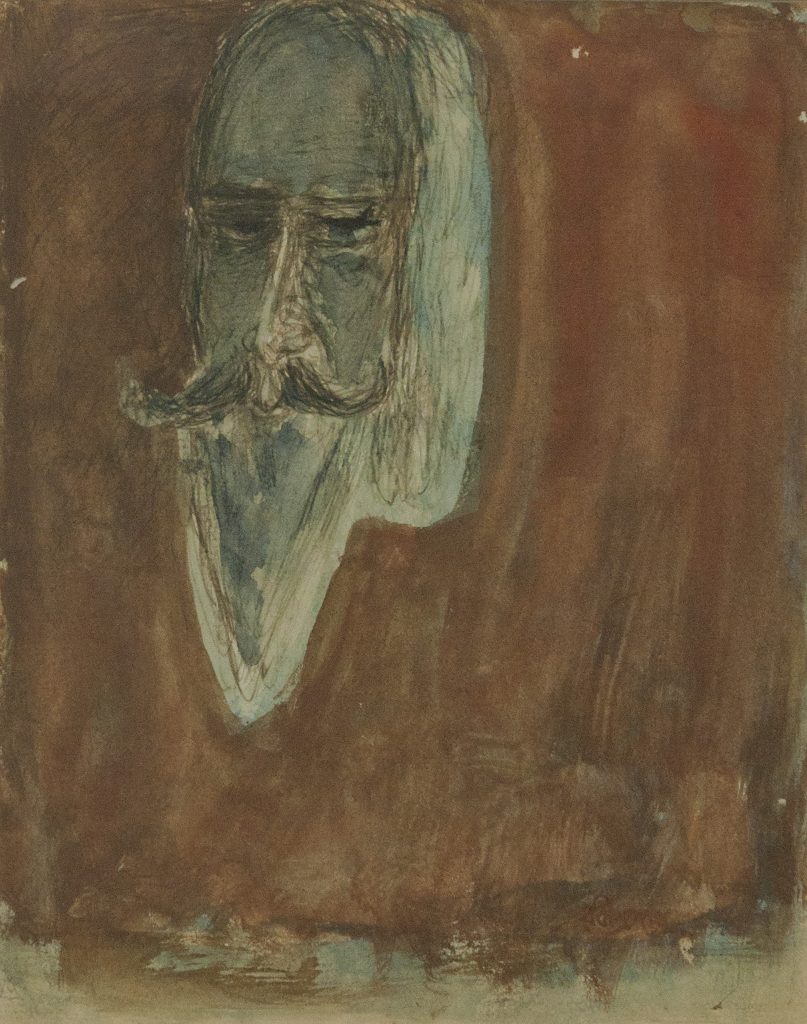
Self Portrait by Rabindranath Tagore, Watercolour on paper, MAC.00478
8. Raja Ravi Varma (1848-1906) – An Artist of the People
Raja Ravi Varma trained in the European style of academic art and portraiture while working as a court artist for the Maharaja of Travancore in the 1860s. He was commissioned to paint the portraits of several aristocratic and royal families, which till date are some of the finest works created in the genre. Ravi Varma’s genius, though, lies in the way he merged European academic realism with an Indian sensibility to depict mythological figures and women. He also set up the Ravi Varma Press during the 19th century to enable mass proliferation of his images, which transformed the public’s interaction with art, particularly with religious imagery.

Hans Damayanti by Raja Ravi Varma, Oil on canvas, MAC.03056
9. Sailoz Mookherjea (1906-1960) – The Indian Matisse
The lesser known of the group, Sailoz Mookherjea was one of the first artists in the country to paint expressionist landscapes at a time when watercolour paintings and academic realism was the educational norm. A meeting with Henri Matisse while he was in Europe from 1937-38 left an indelible impression on his work, in which he emphasised movement and colour over form. While his colour palette and brushstrokes reference the Expressionist movement in the West, his subject matter remains rooted in India as he was influenced by folk art and Basohli miniatures.

The Village Family by Sailoz Mookherjea, Oil on canvas, MAC.00464
Krittika Kumari is the Digital Editor at the Museum of Art & Photography, Bengaluru. A graduate of the Courtauld Institute of Art in London, her research interest lies in the Mughal miniature painting tradition, as well as Indian Modern Art.








